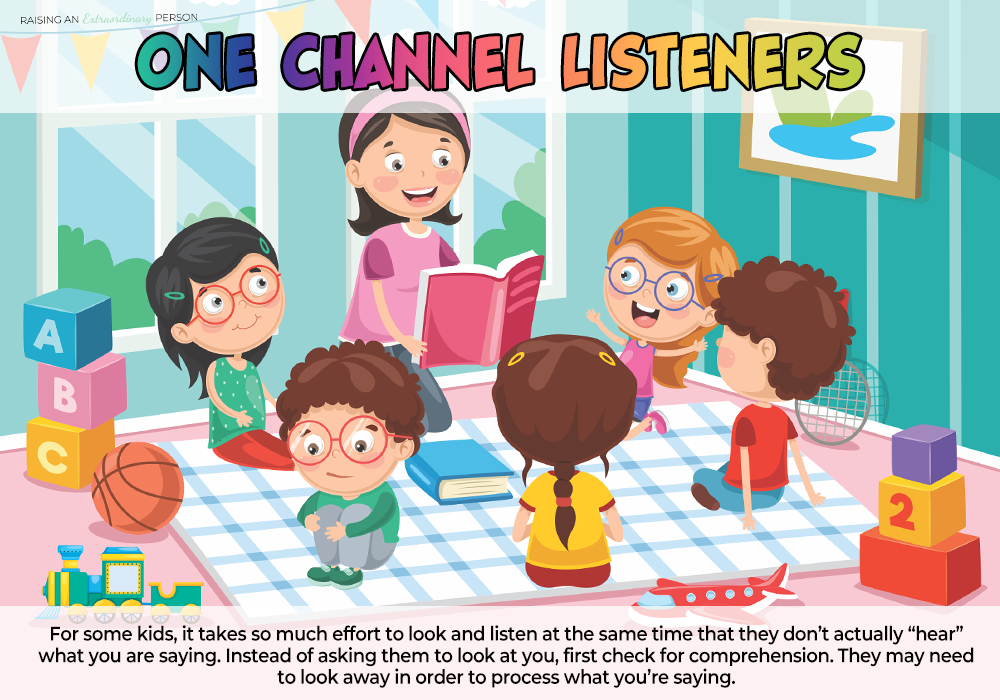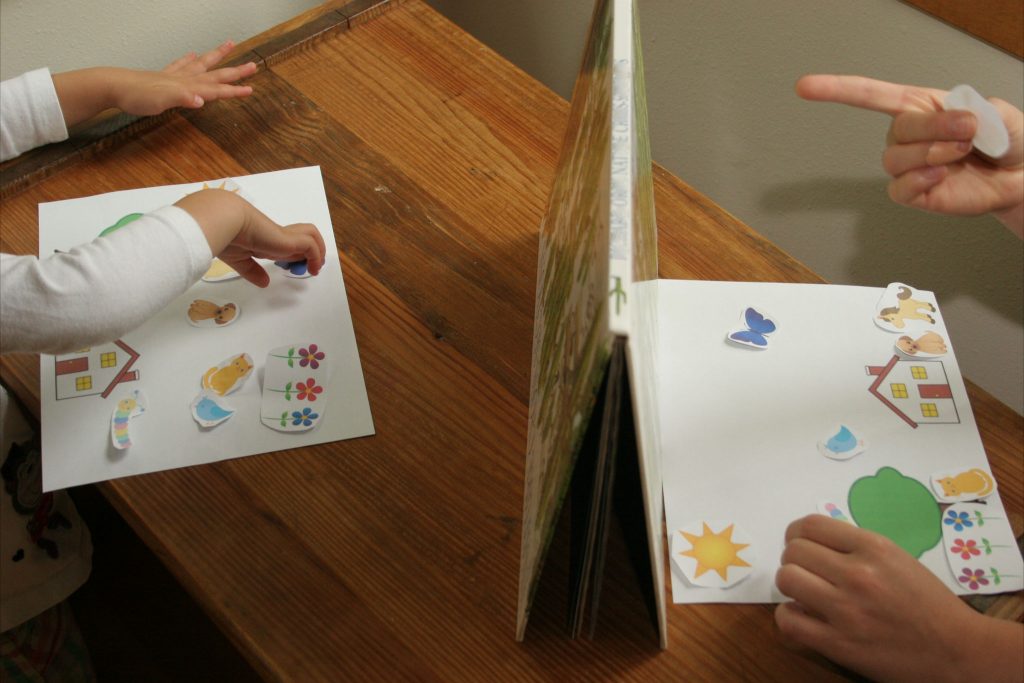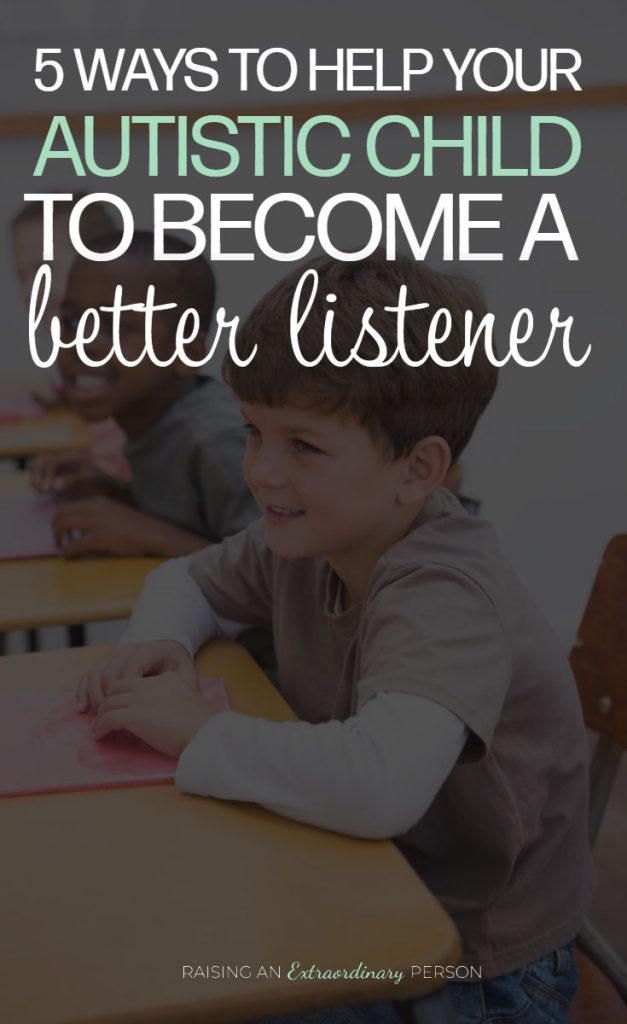5 Ways to Improve Listening Skills and Comprehension
Listening skills are so important because it is actually the most important part of communication.
You should not assume that listening is done automatically or that your child has the skills to listen to instructions and comprehend the information they were given – even if they are able to repeat back to you what was just said.
Improve Listening Skills & Oral Language Comprehension
Children may struggle not only with oral language comprehension but also with filtering out unimportant stimuli, such as background noise and focusing on what’s important.
Other types of sensory input can be distracting as well such as too much visual input, an unpleasant smell, or internal sensations like hunger or fatigue.
They may also struggle with actually determining what part of your message is important information and what is not.
Disclaimer: This post contains affiliate links
This post is part of a 13 part series on techniques for improving communication skills. Each part of the series contains this table of contents so you can easily navigate to the other parts of the series.
Table of Contents:
- Introduction
- Build a Relationship
- Individualize Motivation
- Observe, Listen, then Join
- Optimize Language
- The Premack Principal
- Basic Redirect
- Breaks
- Picture Rehearsal
- Add Structure at Home
- Teach Independence with Prompting
- Transactional Supports
- Add Structure to the Learning Environment
Comprehension
It’s actually easy to overestimate how much a child understands.
Due to a child’s ability to learn routines, along with gestural cues, environmental cues, and other visual supports – it may seem like their comprehension is a great deal better than it actually is. It’s possible they’re relying on all of these others cues, and can’t follow directions without them.
This happens most often with children who are “high functioning“, especially when they are verbal and have even developed a large vocabulary. Parents and teachers may feel a child can understand “everything they say”.
However, the child doesn’t always grasp the intended meaning.
It’s extremely important to check for comprehension and to develop comprehension.
Whole Body Listening & Single Channel Listening
Breaking listening down into components for your child and reinforcing each component might be helpful
For example, teach your child to:
This is usually called “
However, some children with sensory challenges are not able to process information when they are doing “whole body listening” because they may have to focus so intently on what they are doing, processing visual input, and processing auditory input that they can’t focus on the actual message.
If this applies to your child – they may actually listen better when they stand or sit with their back turned to you, or with their head down playing with a toy or doodling. I call this one channel listening.

If your child appears to be ignoring you, it’s possible they’re actually just a one channel listener. Check for comprehension by asking a question about what you just said and then reward or praise your child for listening when they show comprehension.
If you force a one channel listener to do “whole body listening”, you could actually negatively impact their learning and their comprehension.
Ways To Improve Listening Skills And Comprehension Skills
Barrier Games
Barrier games are one of the ways you can practice listening skills and comprehension.
Two or more players sit around a table with a barrier set up so they cannot see each other’s materials. Every player will have the exact same materials in front of them. A binder, book, or bristol board makes a quick and easy barrier.
Each player takes turn giving a specific direction on how to arrange the materials in front of them. Depending on the child’s individual skill level, instructions may be simple or complex.
Absolutely no visual cues are given.
At the end of the game, the goal is for everyone’s materials to be set up the same way. You’ll have a good idea as to whether or not your child was able to both listen and comprehend instructions based on
You can use blocks or draw pictures on a piece of paper, or cut and paste shapes, use Mr. Potato head, make patterns with geometric shapes, build with Picasso tiles, coloring pages, etc.

Related: Using Barrier Games to Improve Social Skills
Barrier games are a great way to practice and develop comprehension of various concepts and social skills including:
Here are some barrier game printables to get you started:
- Winter Themed Barrier Game
- At The Farm
- Under The Sea
- Fairy Tale (from And Next Comes L)
- Pirates (from And Next Comes L)
- St Patricks Day Game (TPT)
- Easter Game (TPT)
Summarize Important Information
Summarizing important information is a helpful technique for children who struggle with filtering out background sounds or determining which components of a lesson or conversation were most important.
There a various ways this can be done:
- Use visuals to draw attention to important information – including cartooning, social stories, task strips, etc.
- Providing a written summary and highlighting the important components of the lesson – in class, this can help children with new lessons to learn key words and pertinent information.
- Some children use reading to support oral comprehension (usually the reverse is expected) so for these
kids written instructions can make a huge difference.
Recording
If your child needs extra time to process information, it can be extremely difficult to listen to, for example, a speaker at school giving a lecture. In these situations it could be helpful to record – either video or audio – so they can replay the information later.
As a parent, you can even listen along with them and help them pick out important parts of the lecture, or ask questions to gauge their level of comprehension.
Give Adequate Processing Time
Allow your child to have additional time to process information before adding on to what you’re saying. Also keep in mind that if your child is distressed emotionally, or overstimulated, processing time will increase.
Give your child short, one or two-step directions. Pause for 3-5 seconds (or more if you know your child takes longer than that to process information) between directives.
Use as few words as possible to convey your message. For example, “Pick up the blocks, please” rather than saying “These blocks are all over the floor. I need you to start picking them up right away”.
Optimize Your Communication Techniques
We put a lot of focus on our children’s communication skills. Sometimes the easiest the most effective way to improve their comprehension is to optimize the way you communicate.
There are 5 ways to optimize your communication skills:
- Talk more slowly
- Mirror their language
- Exaggerate your facial expressions
- Exaggerate body language
- Choose the right channel
Read about each of these language optimizing strategies in more detail here.
It’s also equally important to demonstrate good listening skills as well. Modeling these skills helps your child learn them too. Learn more about this strategy and other ways to promote strong listening skills in your children on Weekends.Family.


